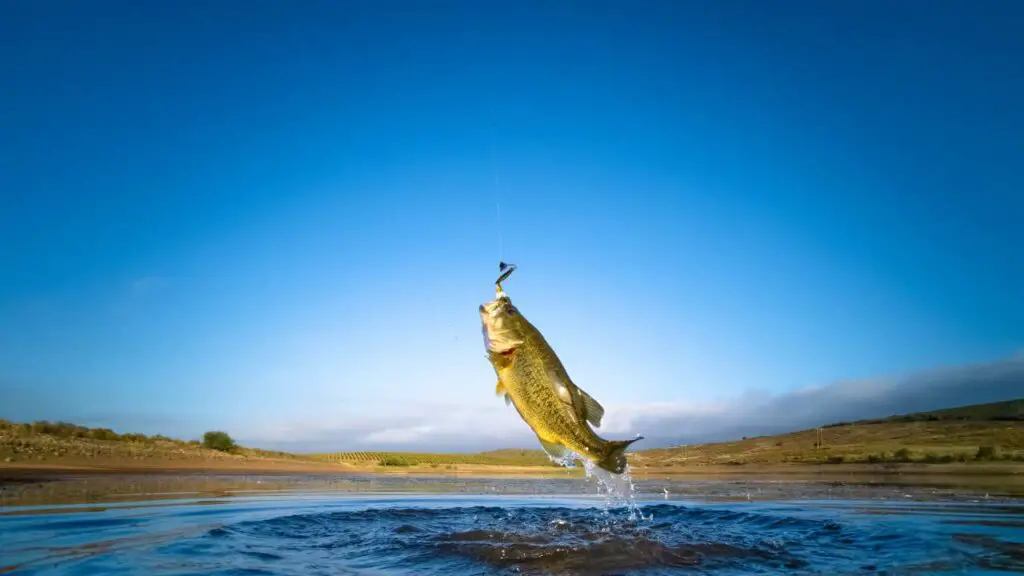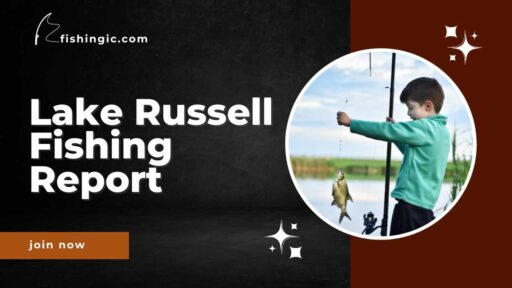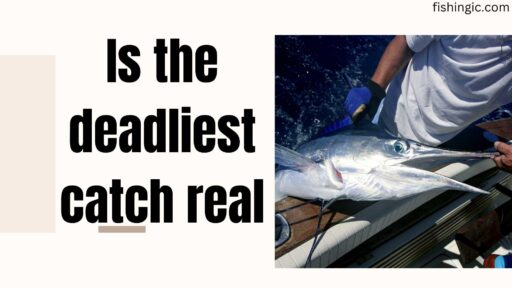Get real-time fishing information and updates for Lake Russell Fishing Report. Stay informed about the best fishing spots, techniques, and species availability.
Introduction to Lake Russell Fishing Report
I am a passionate fisherman who has seen my way through several lakes and rivers, hoping to settle on the best fishing ground. Out of these secret areas that have attracted me with their beauty and a large number of fish, Lake Russell Fishing Report stands out. Nestled amid Georgia land, this water body is unique in that it offers beginners and experts an ideal place for fishing. In this inclusive report, I will let you know some of the secrets behind Lake Russell’s meaning throughout the year, where it can be found, when it’s good to visit, and how to approach it, among other aspects.
Significance of Fishing Reports
The first thing we must do before going into details about Lake Russell Fishing Report is to appreciate the role played by fishing reports. It serves as a guide for anglers’ success rate while at sea or ocean fishing. This provides information on the current water temperature, visibility, and fish location. At certain times, one could utilize this report to answer questions like: What are the most productive techniques being used? When are the best times for catching? Where should I expect to find fish? Knowing all these can make your fishing trip more enjoyable while raising your chances of catching a record trophy.

Understanding Lake Russell Fishing Report
Now that we understand the significance of fishing reports let’s delve into how to interpret the Lake Russell fishing report. The report is normally updated by local experts or experienced fishermen who monitor changes within the lake’s ecosystem, observing them keenly; such data can be useful especially when predicting outcomes associated with future actions taken within this environment. It indicates whether there is enough water in the dam or not, shows whether it is currently warm or cold as well, and presents amounts concerning recent catches, thus making it possible for someone to look into other areas that may be fished upon.
Seasonal Fishing Patterns on Lake Russell
Lake Russel has been identified with different seasonal patterns regarding where its fishes reside, the level of activities they engage in, and the kind of baits they feed on. Below is a breakdown of what you can expect throughout the year:
Spring (March-May)
Top Time for Crappie: Spring is considered one of the best times to catch crappies in Lake Russell, where crappies move into shallow waters (2-8 feet) that make it easy for anglers to locate them; effective jigging or minnow fishing strategies can be employed at this time.
Bass on the Move: Largemouth bass become more active with increasing water temperatures. Cast crankbaits, spinnerbaits, and soft plastics around spawning areas such as coves and creeks
Stripers Head Upstream: Striped bass begin their migration upstream towards the Hartwell Dam in search of cooler water. Popular techniques involve downlinking live herring near the main channel.
Summer (June-August)
Deep Water for Bass: The summer heat sends largemouth bass moving into deeper sections of cooler water like main channel ledges, points, and brush piles. You may use Carolina rigs, jigs, and deep-diving crankbaits when targeting these fish species.
Nighttime Crappie: Crappie fishing transitions to deeper water (around 10-15 feet) and nighttime activity. Jigging or minnow fishing under boat lights near brush piles or fish attractor locations.
Catfish Action: Catfish are more active during summer. Stink bait, live bait (cut herring/nightcrawlers), or catfish punch baits will produce on channel edges or humps.
Fall (September-November)
Top water Tactics for Bass: As fall approaches there is decrease in temperature resulting into increased surface activity by bass which would respond well to poppers and jerk baits being used at this period.
Feeding Frenzy: Fall usually witnesses a feeding frenzy as fish species stock up for winter. At this time of year, you will have a great chance of catching many kinds of fish, such as bass, crappie, and stripers.
Stripers Return Downstream: After their upstream spawning runs, striped bass begins to migrate back downstream towards the dam. Bucktails or spoons can be very productive when trolled.
Winter (December-February)
Bass in Deep Water: Largemouth bass head to their deepest winter haunts on the main channel in about 20-30 feet deep water. Slow presentations, like jigs, spoons, and drop shots, work best for them.
Slow Bite: Fishing activity generally slows down during winter as water temperatures decrease. Nevertheless, with live bait or jigs, experienced anglers still get after crappie and catfish lurking in deeper waters.
Best Fishing Spots on Lake Russell
Now that we know the seasonal patterns, let’s consider some of the top fishing spots at Lake Russell. One example is located at the upper end near where they are damming up for electricity purposes or similar things. This area includes shallow areas along with deep ones that widen out into an expanse of fishing opportunities. Another hotspot is built upon submerged timbers near creek mouths and cove openings; these structures provide excellent hiding grounds for fish worth checking out; lastly, rocky points and ledges found in the main lake are known places for a good number of fish, especially bass. Once you make these places targets, you can increase your chances of landing some trophy-class catches.
Recommended Fishing Techniques for Lake Russell
In order to maximize your success while fishing in Lake Russell Fishing Report, it is important to employ appropriate angling techniques that are well-suited to each particular situation. When targeting bass, using top water lures early in the morning or late in the evening can be highly effective. As the day progresses, turning into night changeover from soft plastic worms to crankbaits will pull strikes from smart predators of these fish species. Such types of structures harboring submerged structures are often a haven for crappie, where one can use live minnows or small jigs.
Bream can be caught on live bait, such as crickets or worms, whereas catfish can be caught using cut bait or stink bait on the bottom. By experimenting with different techniques and adjusting your approach based on the fishing conditions, success is attainable in Lake Russell.
Common Fish Species in Lake Russell
Lake Russell is home to healthy populations of various fish species, making it a popular destination for both recreational and experienced anglers. Here are some of the most commonly sought-after fish species in the lake:
Largemouth Bass (Micropterus Salmonids): Largemouth bass are the primary piscatorial attraction at Lake Russell. These can be found throughout the lake in different habitats but their populations are healthy due to suitable spawning grounds and abundant food.
Spotted Bass (Micropterus punctuates)
Spotted bass that also occur in Lake Russel together with largemouth bass have become another common black bass fish species. They prefer clearer waters and rocky habitats more than largemouth bass do.
Crappie (Apomixis spp.): Crappie remains anglers’ favorite because they are abundant and make excellent table fare; they tend to school around brush piles, docks, and other submersible structures
White Bass (Moroney chrysops): White bass are smaller cousins for striped bass with similar fast-paced action while fishing them. They typically locate themselves around major channel areas as well as rock points in schools.
Striped Bass (Moroney saxatilis): Striped bass are highly valued sportfish in Lake Russell that possess trophy potential. Their migratory habits move them upriver during the spring and downriver during the fall.
Channel Catfish (Ictalurids punctatus): Channel catfish are bottom-dwelling fish found all over North America in lakes and rivers. They are also a preferred target for anglers because they are easy to catch and have excellent flesh.
Blue Catfish (Ictalurids furcatus): Blue catfish, the biggest species of catfish in North America, grows huge. They exist in Lake Russell, but they occur less frequently than channel catfish.
Yellow Perch (Perce flavescent): Yellow perch is a schooling fish found mainly in cool waters, usually rock or gravel bottoms. On the other hand, they are favorite pan fishing targets caught on live bait or small jigs.
Bream (Lepomis spp.) Bream, including bluegill, rehear sunfish, and pumpkinseed species, occur abundantly at Lake Russell. Small jigs, worms, and crickets readily attract them as pan fish.
These few of many different types of fish that reside in Lake Russell. Anglers of every expertise level will undoubtedly appreciate this lake’s varied environment and wholesome populations of fish.
Recent Fishing Reports & Catches on Lake Russell
Well, recently, we can look at these fishing reports on catches inside Lake Russel to help you know what to expect. The newest reports show good bass fishing, with several largemouth having been landed by fishermen just like spotted bass. Crappie catches have been good, too, especially around submerged timber or brush piles. Live bait has been getting lots of bream for some time now. Deep holes and drop-offs have been successful for cat fishermen so far this year. These recent reports indicate that Lake Russel currently offers superb possibilities for angling across multiple species.
Safety Tips for Fishing on Lake Russell
Below are some safety tips to take into account when fishing on Lake Russell:
Before You Go
Life Jacket: Always wear a properly fitted life jacket while on the water. This is the most important safety tip, as unexpected falls or sudden weather changes can happen.
Boating Regulations: Make sure you are aware of the boating regulations in Georgia and South Carolina, where there is a lake. Carry all your licenses and permits along with you.
Weather Check: It’s always good to check the weather forecast before going out. Watch out for possible storms, high winds, or extreme temperatures which may put your safety at risk.
Trip Plan: Ensure that somebody knows about your plans, including the destination, the number of people in the boat, and the time you expect to return from a fishing trip.
Fishing Gear: Remember such items as first-aid kits, sunscreens, insect repellents and medications that may be necessary during your fishing expedition.
On the Water
Boating Safety: Observe safe boating practices. These include keeping a distance away from other boats, swimmers, and structures. Avoid operating a boat after taking alcohol.
Water Conditions: Be conscious of things like current patterns, depth contours, and submerged hazards when in water bodies.
Sun Protection: Protect yourself with sunglasses, a hat, and regular application of sunscreen against sunlight burns …
Fish Consumption : Some areas of Lake Russel have fish consumption advisories issued by South Carolina Department of Health and Environmental Control (SCDHEC). Know if any fish specific consumption limit restrictions exist .
Drink enough water to avoid dehydration on hot and sunny days. Stay Hydrated.
Additional tips
Be Careful of the Animals: You can find alligators, among other creatures, at Lake Russell. So keep a safe distance away from them.
Do Not Leave Any Traces That Will Show You Visited Here. Always throw your trash or fishing line in the right places.
Politeness: Be polite to others who share the lake with you for angling purposes.
By following these safety tips and being prepared, you can ensure a fun and enjoyable fishing experience on Lake Russell. Keep in mind that safety comes first when enjoying outdoor activities.
- Do I need a license to fish on Lake Russell? Yes, one must have a valid GA fishing license to fish on Lake Russell. Ensure you have the necessary permits before heading out.
- Are there any boat rental services available? Yes, there are several boat rentals around the lake which may be booked ahead especially during peak seasons..
- When is it best to fish in Lake Russel? Early morning or late evening happens to be some of the most productive hours for Lake Russel’s angling expeditions but daytime catch is possible if right techniques and tactics are employed.
Conclusion with Resources for Latest Fishing Reports
In summary, anglers have not yet discovered how great Lake Russell is! These seasonal patterns must be followed; some thorough study of great angling points should be done; use all recommended strategies correctly; one has got to know about varieties of fish that live here; this way, you will never visit any source like this again without consulting info provided by recent fishing reports on L.Russell, so that changes could be made as required by weather conditions.





